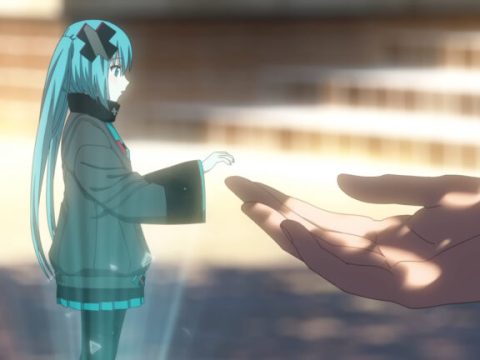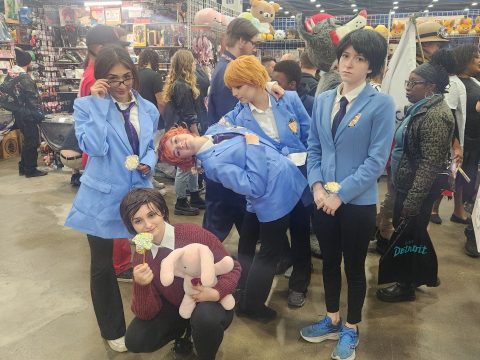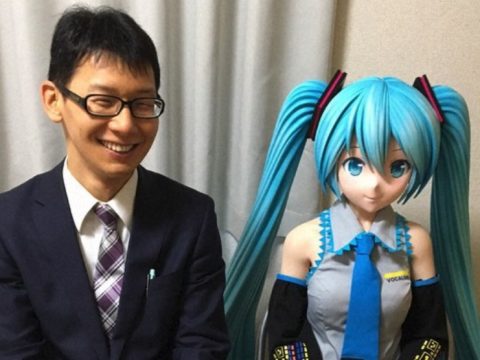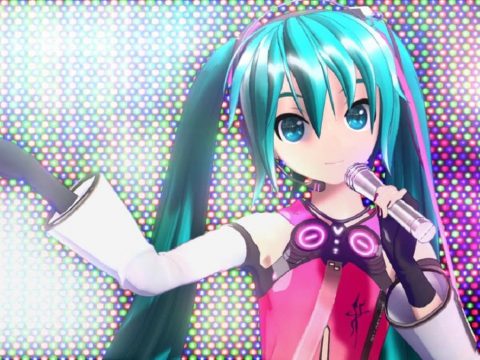 Once you get past the typos in the first 10 pages and settle into the awkward phrasing of the English localization, Hatsune Miku: Acute is a really decent Lifetime movie. The manga is based off the Vocaloid song by KurousaP/WhiteFlame but familiarity with the song, or with Vocaloids, isn’t necessary to enjoy the story.
Once you get past the typos in the first 10 pages and settle into the awkward phrasing of the English localization, Hatsune Miku: Acute is a really decent Lifetime movie. The manga is based off the Vocaloid song by KurousaP/WhiteFlame but familiarity with the song, or with Vocaloids, isn’t necessary to enjoy the story.
Acute, a self-contained one-volume manga, tells the story of Miku, Luka, and Kaito. The three of them have been the best of friends since childhood, but as they grow older their feelings change and they become embroiled in a tragic love triangle. Luka and Mika are nextdoor neighbors and are as close as sisters, but that bond begins to fray when they both fall in love with Kaito.
To preserve their friendship, Miku and Luka swear that they’ll keep their feelings from Kaito, but when Luka and Kaito go to college Miku, a year younger than the other two, feels left behind. She can’t get a hold of her old friends and they don’t hang out like they used to. Then one day she catches Luka leaving Kaito’s apartment and she knows without a doubt they’ve been seeing each other behind her back. Miku’s life and feelings begin to spiral out of control.
It starts out like a romance, but Acute is really a tightly crafted psychological thriller with shades of Fatal Attraction. It’s told through all three points of view and structured in a way that keeps the tension building to a poignant crescendo. It’s also interesting to see each character’s perspectives, adding rich layers that wouldn’t be there if the story were told from only one point of view. For Vocaloid fans there is a nice nod to the music video for the song “Acute” that the story is  based on: in one scene, Miku and Luka wear their outfits from the video (although frankly, they don’t look appropriate to the scene …).
based on: in one scene, Miku and Luka wear their outfits from the video (although frankly, they don’t look appropriate to the scene …).
The art is beautiful and Asahina is a genius at drawing long hair blowing in the wind. All the characters are true to the Vocaloid designs and the inking is smooth as silk. The color pages at the beginning are beautiful; it’s a real shame the whole book couldn’t be in color, but the black and white is also well balanced. While the ending might feel a bit too forgiving and tidy, the book has a deftly handled drama, compelling script, and style to spare.
publisher: Dark Horse
original song: KurousaP/WhiteFlame
illustration: Shiori Asahina
rating: 14+
This story appears in the October 2017 issue of Otaku USA Magazine. Click here to get a print copy.







